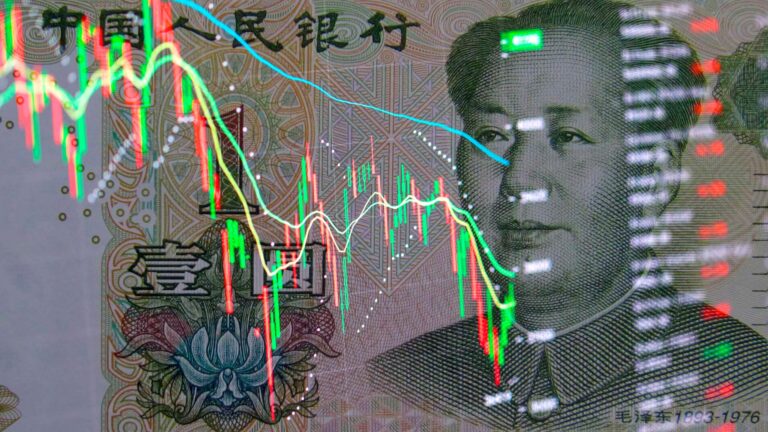When I saw the World Bank quietly bump China’s 2025 growth projection to 4.8 percent (up from 4.0), I raised an eyebrow—not because Beijing can’t engineer a rebound in the short run, but because the narrative behind the number is riddled with smoke, mirrors, and national ambitions disguised as technocratic optimism.
Let’s be clear: China’s leadership is always playing two simultaneous games. One is real—rebuilding factories, pushing infrastructure, and subtler consumer stimulus. The other is symbolic—sending the world a message that, despite internal tensions, debt bubbles, and demographic drag, it remains the engine of global growth. The World Bank’s new forecast plays right into that second game.
To boost the headline number to 4.8 is to whisper that the Chinese model still works—that growth is resurgent, not sagging. It gives legitimacy to subsidy-happy industrial policy, state-backed leverage, and debt-financed infrastructure investments that might barely pass risk-adjusted return thresholds. If you squint, you almost miss the trap: the projection leans on assumptions that China’s export sectors will remain robust, that local governments will keep expanding credit quietly, and that the “soft landing” of the property sector won’t cascade outward.
But let’s talk real economics, not happy talk. First, China continues to stiff-arm its currency. The yuan is managed more than traded. Backdoor interventions, sterilized operations, and capital controls all mute the signals that a free float would send. That distorts external demand, obscures competitiveness, and lets Beijing paper over internal imbalances. When you control the FX script, you also control the hype narrative.
Second, infrastructure as a growth engine reaches diminishing returns. Yes, roads, bridges, and high-speed rails—they look spectacular. But debt-fueled infrastructure only produces real reshoring returns when utilization, maintenance, and complementary private-sector investment exist at scale. Without that, you risk building “white elephant” assets. Recent research shows China’s infrastructure binge often delivers fragile returns once debt, maintenance, and inefficiencies are baked in.
Third, debt and leverage are now systemic vulnerabilities, not cyclical anomalies. Local government financing vehicles, municipal bonds, hidden off-balance-sheet obligations—the Chinese system is increasingly built on recursive borrowing. You inflate growth through credit, but then you need more credit to sustain the illusion. That’s not stable.
So when I see institutions like the World Bank issuing a 4.8 percent forecast with a straight face, I see risk masquerading as confidence. I see external partners misled into overallocating to Chinese equities, bonds, and infrastructure bets precisely at moments when tail risk is rising. I see geopolitical capital flowing toward a narrative of “unavoidable ascendancy” rather than a sober reckoning with structural decline.
Meanwhile, across the Pacific, where real entrepreneurship, transparency, and capital discipline still operate, the U.S. must not sleepwalk into complacency. Pro-America—in the real sense—means keeping our fiscal house in order, defending free markets, preserving capital flow integrity, and avoiding the temptation to mirror China’s hollow stimulus posture. We should build strength by risk-adjusted rigor, not headline chasing.
China’s internal consumer demand is still weak. Household leverage is climbing. Social safety nets are underfunded. Real estate continues to deflate quietly in many cities, even as the state arranges artificial support. The official 4.8 looks like a public relations number intended to crowd out skeptical voices abroad and seduce foreign capital into thinking Chinese growth is safely back on track.
We must treat it as more than a projection—we should treat it as a signal. A signal that we’re likely heading into a global capital misallocation if we don’t recalibrate. If U.S. pension funds, sovereign wealth funds, or institutional allocators lean too heavily on that 4.8 forecast, they expose portfolios to asymmetric downside. The upside “recovery” is baked into that projection; the downside—collapse in credit markets, local defaults, cascading deleveraging—is not priced in.
The exercise is familiar. Back in 2008, institutions relied on body-count forecasts and rising housing prices while ignoring fragility in the plumbing of finance. We can’t fall for the same pattern twice, only in a globalized, China-centric marquee this time.
So yes, I remain deeply cynical about the World Bank’s upgrade. Not because I’m anti-China, but because I’m pro-truth, pro-market, and pro-America. The U.S. still holds a commanding role in innovation, law, capital markets, human capital, and institutions. Our challenge is to resist envy of the “growth dragon” and instead double down on structural advantages.
If China’s 4.8 percent growth—as presented—were a stock pitch, I’d call it overpromised, under-differentiated, and structurally fragile. The trailing twelve-month metrics look okay in isolation; the forward returns, in my view, look more like a rolling bet on credit expansion than real productivity gains.
Investors should treat this forecast as an early warning, not a green light. Reassess the capital exposed to Chinese credit risk. Demand transparency in cash flows, debt servicing, and foreign exchange hedging assumptions. And never confuse smoke and mirrors with a durable competitive advantage.
Because the greatest risk of all is complacency. When global capital leans on a China rebound that’s more illusion than basis, the ripple effects—in emerging markets, in commodity cycles, and in inflation dynamics—hit back harder than any trade war.
Let others celebrate the 4.8 number. I’ll keep watching credits crack, balance sheets thin, and leverage lines maxed out. In markets, the future penalizes projections that ignore structural risk—no matter how handsomely they’re dressed.
***
Erik Weir is a serial investor, entrepreneur, and author of Who’s Eating Your Pie?: Essential Financial Advice that Will Transform Your Life. He has led equity and real estate strategies across North America, Europe, and Asia and works with high-net-worth investors, tech founders, and family offices to blend capital markets wisdom with behavioral finance discipline.
Images are for reference only.Images and contents gathered automatic from google or 3rd party sources.All rights on the images and contents are with their legal original owners.

